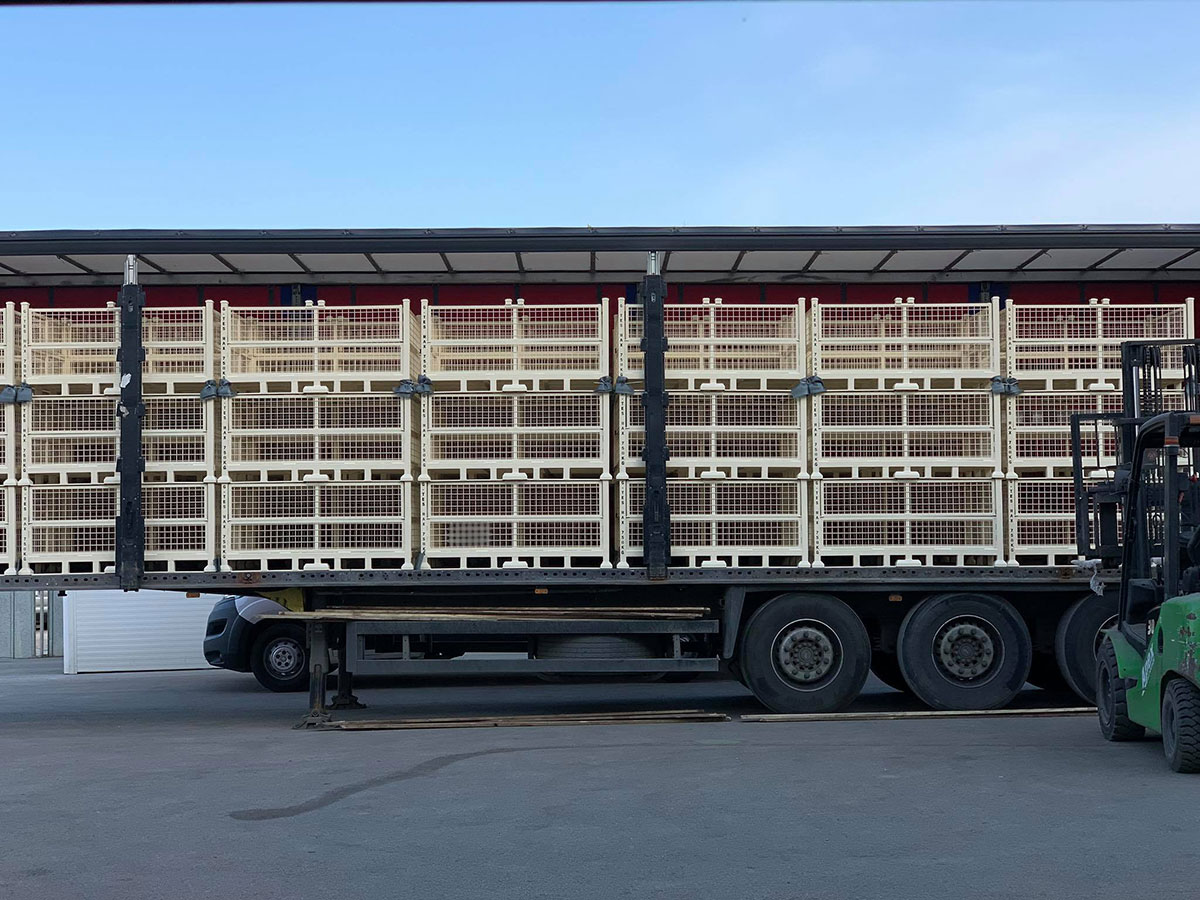
The transportation of automotive parts, such as engines, body panels, and other components, is a critical element in the automotive manufacturing supply chain. Steel racks designed for the transportation of these parts provide a safe and efficient solution, reducing the risk of damage during transit and making handling more convenient. These specialized racks are tailored to the unique requirements of the automotive industry, ensuring that components are stored, moved, and delivered securely and efficiently.
The Importance of Steel Racks in Automotive Transportation
Steel racks play a significant role in the automotive industry for several reasons:
- Protection Against Damage: Automotive parts are often delicate and expensive. Transportation racks are designed to hold parts securely, preventing them from moving or being damaged during transport. This is particularly important for parts like body panels, which are vulnerable to dents and scratches, and precision-engineered components like engines and transmissions.
- Efficient Use of Space: Steel racks are often designed to be stackable or collapsible, maximizing the use of space in transport vehicles. This not only reduces the number of trips needed to transport parts but also optimizes the use of storage space in warehouses and manufacturing plants.
- Ease of Handling: With integrated forklift slots or caster wheels, steel racks allow for easy movement within facilities and during loading and unloading operations. This minimizes manual handling, improving safety and reducing labor costs.
- Durability: Steel racks are robust and durable, able to withstand the harsh conditions of both manufacturing environments and transportation. This ensures that they can be used repeatedly, offering long-term cost savings for automotive manufacturers.
Stages of Design and Production of Steel Racks
The design and production of steel racks for transporting automotive parts is a process that involves several key stages:
1. Design and Concept Development
The process begins with a detailed design phase, which includes understanding the specific transportation needs of the automotive parts in question. Engineers and designers collaborate with automotive manufacturers to define the dimensions, weight, and handling requirements of the parts that need to be transported.
Computer-Aided Design (CAD) software is typically used to create precise 3D models of the racks, allowing designers to simulate how parts will fit and be secured within the rack. This phase may also include testing virtual prototypes to ensure that the rack will be stable, durable, and safe during transport.
2. Material Selection
Steel is chosen for its strength, durability, and ability to handle heavy loads. Various types of steel, including stainless steel or galvanized steel, may be selected depending on the environmental conditions the racks will face (e.g., exposure to moisture, high temperatures, or corrosive elements). The steel’s thickness and grade are also chosen based on the weight and size of the automotive parts being transported.
3. Cutting and Shaping
Once the design is finalized, the steel sheets or tubes are cut into the required sizes using laser cutting, plasma cutting, or mechanical shearing techniques. These pieces are then shaped using bending machines, press brakes, or rolling equipment to form the base, sides, and securing elements of the rack.
4. Welding and Assembly
The individual steel components are assembled and joined together using welding. This process ensures that the frame is sturdy and can withstand the weight of the automotive parts it will transport. In some cases, additional reinforcement may be added to enhance the rack’s strength.
Weld quality is critical at this stage to ensure that the joints can handle the stress and vibrations of transportation. The racks are then inspected for defects and tested for load-bearing capacity.
5. Surface Treatment and Finishing
After assembly, the steel racks undergo surface treatment to protect them from corrosion and wear. This typically involves processes like powder coating, galvanization, or painting. The surface treatment also enhances the aesthetic appeal of the rack and provides an additional layer of durability.
6. Quality Testing
The final stage involves rigorous testing to ensure that the steel racks meet the required safety and quality standards. This includes testing the rack’s load capacity, stability during movement, and resistance to environmental conditions. Any defects are addressed before the racks are approved for use.
Conclusion
Steel racks are essential tools in the automotive industry, facilitating the safe and efficient transportation of parts between suppliers, manufacturers, and assembly plants. Through careful design, robust materials, and precision production techniques, steel racks protect valuable automotive components from damage and optimize the logistics of the supply chain. The production process, from initial design to final quality testing, ensures that each rack meets the specific needs of the automotive industry, providing both safety and efficiency in transportation.
